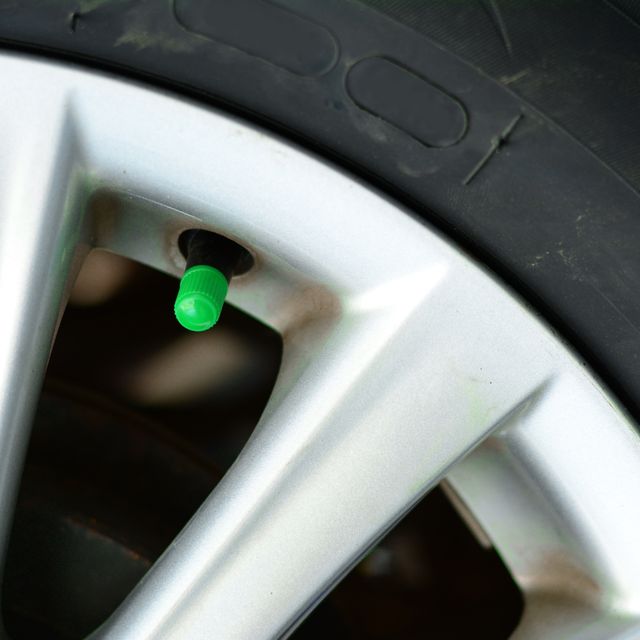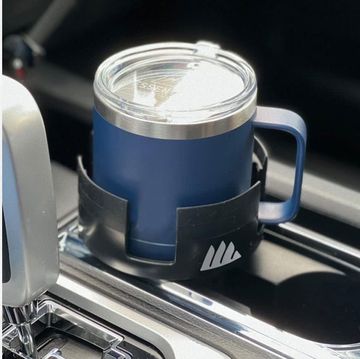Is there really an advantage to using nitrogen in tires rather than air, such as better fuel economy, a smoother ride, or longer tire life? Well, sort of.
Traditionally, car tires have been filled with compressed air. Air is 78 percent nitrogen and just under 21 percent oxygen, and the rest is water vapor, CO2, and small concentrations of noble gases such as neon and argon.
Now some people prefer filling their car’s tires with pure nitrogen, and there are several compelling reasons to do so.
Improperly inflated tires can wear unevenly, wear out faster, and ruin your fuel economy. Simply put, pure nitrogen does a better job of maintaining the right tire pressure, thus enabling your car and its tires to work as efficiently as possible. For most cars, this pressure is measured in pounds per square inch (or psi for short) and your car’s recommended pressures should be printed on a door sill or in the owner’s manual.
All tires lose some pressure over time from the gasses within them permeating through the tire rubber. Nitrogen does this about 40 percent slower than regular air, according to Chemical & Engineering News, and this results in more stable tire pressures over a longer period of time. Oxygen also reacts with the tire rubber as it permeates through it, which leads to a thermo-oxidative process that degrades rubber over time.
🚗You love cars. So do we. Let's nerd out over them together.
Racers also figured out that tires filled with nitrogen rather than air react less to temperature swings. Gases expand with heat and contract with cold, which is why your road car’s tire pressure warning light usually comes on when colder fall temperatures hit. For racing teams, using nitrogen means their tires will have more consistent inflation pressures during a race as the tires heat up with use. When you’re tweaking a race car’s handling with half-psi changes, that’s important.
Water (which typically enters in the form of humidity) is a very bad thing to have inside a tire. Whether it’s present as a vapor or even as a liquid in a tire, water causes larger changes in pressure with varying temperatures than dry air does. Worse yet, water also helps corrode the steel or aluminum rim over time.
Water is less of a concern with nitrogen-filled tires. Any system that delivers pure nitrogen is also going to deliver dry nitrogen. Filling tires with nitrogen involves filling and purging several times in succession to get as much oxygen, water, and other gases out of the tire as possible.
So, there are the benefits. With nitrogen in tires, your tire pressures will remain more constant, saving you a small amount in fuel and tire-maintenance costs. There will be less moisture inside your tires, which means less corrosion on your wheels. However, if your tires were filled with nitrogen (usually denoted by green valve-stem caps) and you’re low on pressure, don’t be afraid to bring up your psi with regular old air.
You also shouldn’t let your nitrogen-filled tires lull you into complacency when it comes to checking air pressures. Keith Willcome, who works in consumer tire engineering for Bridgestone Americas Tire Operations explains:
Nitrogen is no substitute for proactive, regular tire care and maintenance. Bridgestone does not prefer oxygen or nitrogen—both are acceptable gases for tire inflation. Both air and nitrogen respond similarly to The Ideal Gas Law, which says temperature and pressure are directly related. For tires, this means every 10-degree change in ambient temperature will result in approximately 1 psi [of] change in tire inflation pressure. This change is the same for nitrogen-inflated tires and tires inflated with air. Proper inflation pressure is key to tire safety and performance.
That’s a good reminder to check those tire pressures at least once a month regardless of what’s inside.
Ezra Dyer is a Car and Driver senior editor and columnist. He's now based in North Carolina but still remembers how to turn right. He owns a 2009 GEM e4 and once drove 206 mph. Those facts are mutually exclusive.
Stef Schrader routinely breaks and attempts to take project cars on race tracks. She enjoys fancy cheeses, good coffee, fast Porsches, traveling to new places and rare, weird cars. She lives with a large collection of Fisher-Price Puffalumps and an overloaded parts shed.


















